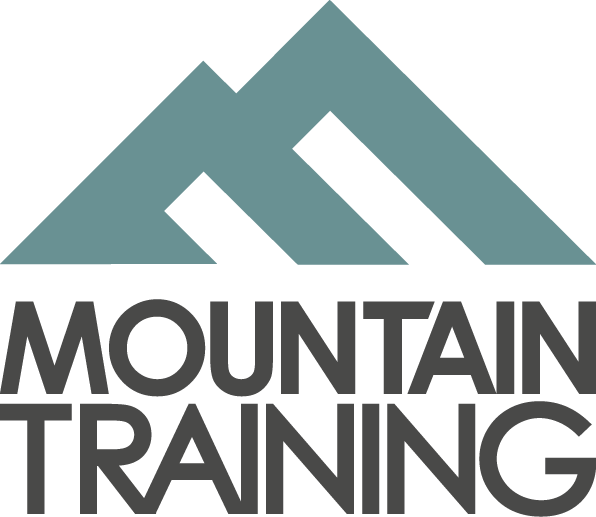KIT LIST FOR OUR WINTER MOUNTAIN DAYS
This is a comprehensive recommended kit list for a day out in the winter mountains, based on the worst conditions we may experience. With the fickle nature of the weather it is best to be fully prepared, however often the on-the-ground conditions may lend themselves to leaving some kit behind on the day and your guide will advise if this is the case. If you need any further advice get in touch, we love talking about kit!
Read on for the detailed version, or to download a simple version of this kit list click here
Read on for the detailed version, or to download a simple version of this kit list click here
the Technical kit
All of this technical kit is essential, but may be hired if you do not possess your own.
- Winter Boots (B1 rated or above, summer walking boots are too flexible to take a crampon. Quick test; if you can bend the sole with your hands they are no good)
- Crampons (make sure they are compatible with your boots)
- Ice Axe (mountaineering style preferred)
- Helmet (designed for mountaineering/climbing)
On the body
Inner Layers
Staying dry is key for ensuring comfort and indeed safety, it pays to try and ensure everything you wear either helps to get rid of moisture (inner layers), or keeping it out in the first place (outer or shell layers). Cotton is generally great at retaining moisture and therefore cooling you down rapidly when you stop, not ideal in winter; so it is best avoided in any clothing worn. Synthetic or wool clothing performs much better at helping get rid of moisture.
Winter weather can be an unforgiving environment, if the weather closes in our outer layers can literally save our skin. With that in mind, we have to ensure we have means to cover all exposed skin to avoid the wind chill of an icy wind.
Staying dry is key for ensuring comfort and indeed safety, it pays to try and ensure everything you wear either helps to get rid of moisture (inner layers), or keeping it out in the first place (outer or shell layers). Cotton is generally great at retaining moisture and therefore cooling you down rapidly when you stop, not ideal in winter; so it is best avoided in any clothing worn. Synthetic or wool clothing performs much better at helping get rid of moisture.
- Comfortable underwear (synthetic or wool ideal, sports fits work best)
- Thin synthetic or wool base layer (quick drying materials for comfort)
- Mid-weight layers (1 or 2) on upper body (multiple layers give more temperature adjustability than one thick one, avoid cotton)
- Insulated walking trousers (or summer ones with thermal leggings)
- Thick winter walking socks (a synthetic/wool blend recommended, avoid cotton)
Winter weather can be an unforgiving environment, if the weather closes in our outer layers can literally save our skin. With that in mind, we have to ensure we have means to cover all exposed skin to avoid the wind chill of an icy wind.
- Light windproof softshell jacket (highly breathable outer layer, that is wind resistant)
- Insulated jacket (a spare layer to go over the top of everything at stops, synthetic insulation preferred)
- Waterproof jacket and trousers (absolutely essential - often indicated with various branded 'tex' logos e.g. goretex, look for taped seams if unsure. Better models have venting zips and ensure it is large enough to fit lots of layers underneath)
- Gaiters (keep the snow and water out of your boots)
- Warm hat, gloves and a buff (a pair of thin liner gloves and a thick wind/waterproof pair of gloves/mitts as a minimum)
- Ski goggles (absolutely essential)
- Sunglasses (not a substitute for goggles; but nicer on a sunny day)
On the back
- Rucksack (with a waist strap and enough space for everything on this list you are not wearing, a 40L pack usually is sufficient)
- Waterproof liner (or rubble sack / dry bags)
- Waterproof phone case (a zip-lock sandwich bag can work unless you plan to use is as a camera)
- Box or bag for packed lunch and snacks - and of course your lunch to go in it!
- Water bottle/flask (drinking bladders usually freeze)
- Suncream, chap stick & sun hat
- Headtorch (check it is charged/has fresh batteries)
- Personal first aid kit with any medications
- Emergency survival bag
- Map of the area in a waterproof case with compass (optional; if you wish to practice your winter navigation)
- A pair of walking poles (highly recommended, ideally with snow baskets)
Quality instruction and guiding since 2012
Working in the sublime Scottish highlands and islands, we offer a variety of high quality hill, mountain, climbing and wilderness focused adventurous activities and training throughout Scotland.
|
Click here for our Terms of Business
|
© Copyright 2012-2024
|






